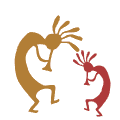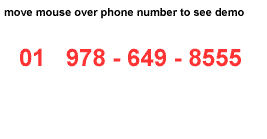Connection Protocol
 All
forms of communication are based on a single rule that can't be violated: both
sender and receiver must understand the rules for that communication. This holds
true from the oldest forms of communication on cave walls to the newest forms
of communication on computer networks.
All
forms of communication are based on a single rule that can't be violated: both
sender and receiver must understand the rules for that communication. This holds
true from the oldest forms of communication on cave walls to the newest forms
of communication on computer networks.
Protocols are simply the rules that computers on a network must follow in order
for those computers to communicate with each other. In your daily life, you
use several communication protocols when you speak with other people. There
is one set of rules that defines the highest level of protocol: one person speaks,
the other person listens, and then roles reverse. There are other sets of rules
that define the content, including the language to be spoken, and the vocabulary
and syntax for that language.
Computer networks, including the Internet, also use many different types of
protocols...
The Internet's Universal Language: Internet Protocol
The Internet Protocol (IP) is the set of rules for
different computer systems on the Internet to communicate with each other.
By using IP, a Microsoft Windows system can communicate with a UNIX system,
which can communicate with a Macintosh system, and so forth.
Like other protocols and networks, such as your phone system, Internet Protocol
(IP) addressing works on the idea of sets and subsets. In the telephone world,
the set and subsets consist of:
You can only have one country code 01 in the entire network. But, you can have
one area code 978 in country code 01, and one area code 978 in country code
02, and so forth. Every subset of numbers, then, is entirely repeatable in the
next higher set of numbers, giving literally millions and millions of possible
combinations. Yet each telephone in that network, whether in Boston Massachusetts
or Hamburg Germany, is uniquely addressable.
In the Internet world, the "telephone numbers"
for the network are IP addresses. IP addresses consist of four subsets
of numbers ranging from 0-255. We often don't see these IP addresses because
there is a system in place, called the Domain Name Service
(DNS), that translates IP addresses to easier to use domain names. For
example:
click on each link to see what happens
http://www.empire.net
(with Domain Name)
is the same as
http://198.144.128.3
(with IP address)
NOTE: The example above points to the ISP that
hosts this course, with the logic that if their systems are down you won't
be reading this example anyway.
An Internet router translates EMPIRE.NET
to IP address 198.144.128.3 and routes communications to the computer that is
the web server for EMPIRE.NET. Let's see what your computer's IP address is:

Every IP address has 4 subsets of numbers, each ranging in value
from 0 to 255. Using this format, the number of possible combinations is greater
than 4.3 billion addresses...that's a lot of computers! And, if you use a dialup
line to the Internet, most providers use what are called "dynamic IP addresses",
meaning your IP address is assigned each time you dial in, and it could be a
different number every time (helping to conserve the IP addresses by pooling
them).
Similar to telephone numbers in the phone system, IP addresses
simply connect the sender and receiver for communications. The conversation
being carried on? Well, that's a whole other story...
Copyright © 2001 Michael J. Doyle
All Rights Reserved.
Designed & Developed by Mike Doyle
using Macromedia Dreamweaver & CourseBuilder
See Mike's Training Schedule for
HTML, Dreamweaver, & CourseBuilder Courses
Email Mike Doyle
 All
forms of communication are based on a single rule that can't be violated: both
sender and receiver must understand the rules for that communication. This holds
true from the oldest forms of communication on cave walls to the newest forms
of communication on computer networks.
All
forms of communication are based on a single rule that can't be violated: both
sender and receiver must understand the rules for that communication. This holds
true from the oldest forms of communication on cave walls to the newest forms
of communication on computer networks. 